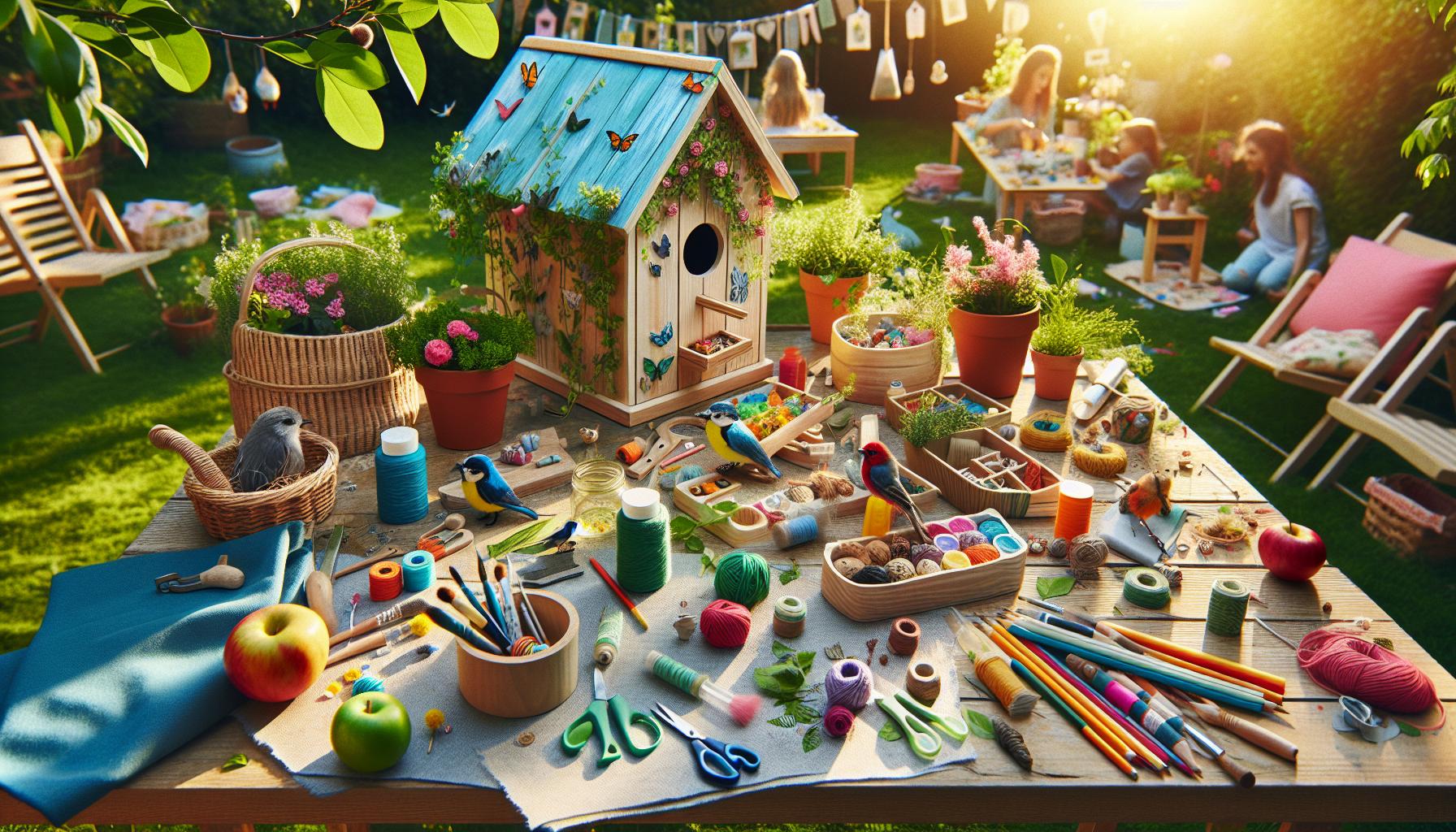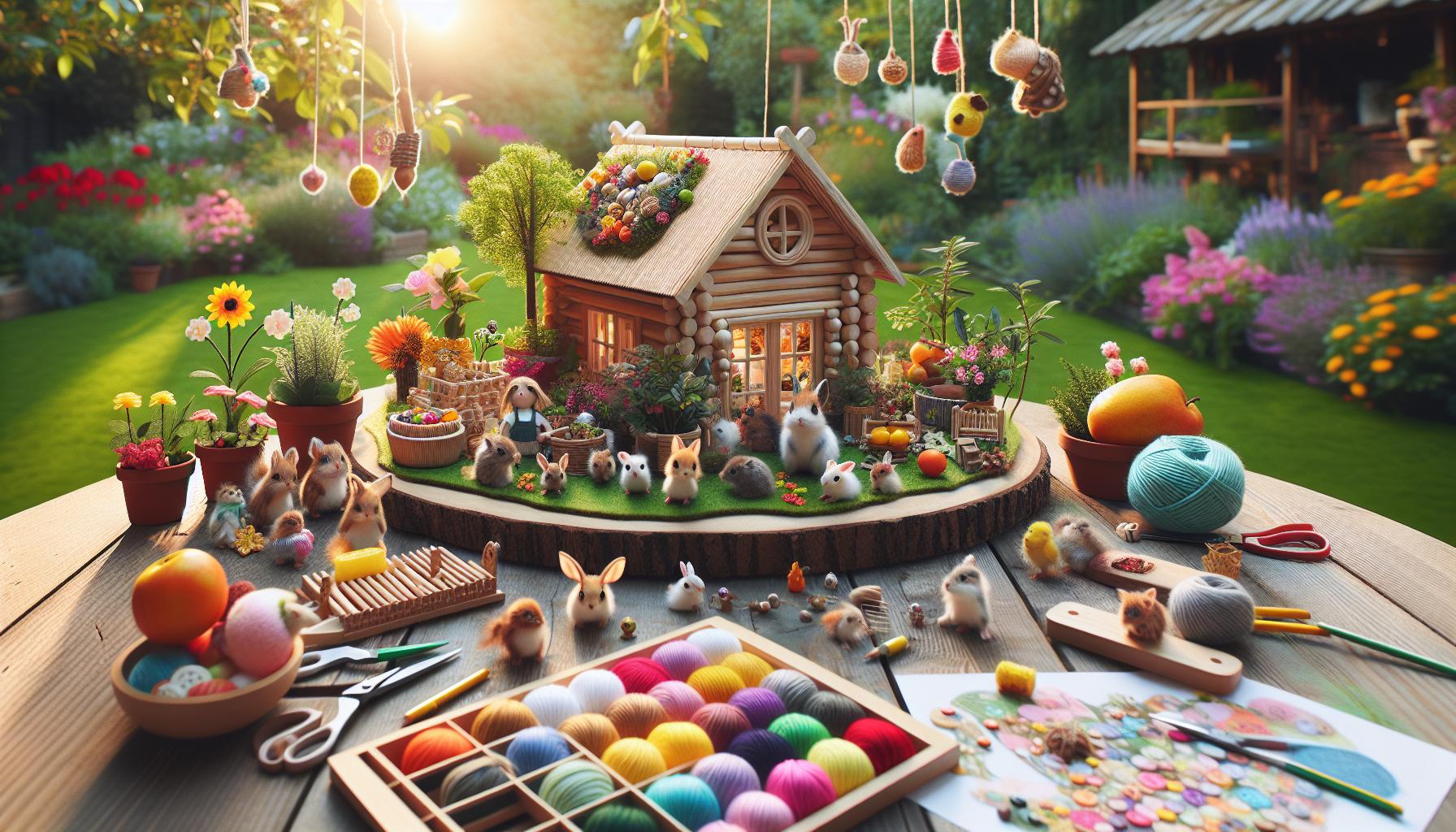Build a Better Bat House too Support Wildlife: Are you ready to be the superhero our ecosystem desperately needs? Forget about capes; all you need is a hammer, some wood, and a sprinkle of creativity! Bats, the often-misunderstood winged critters of the night, are not just for Halloween—these flying mammals play a crucial role in pest control and pollination. In this article, we’ll guide you through the process of building a better bat house, ensuring your backyard becomes the hottest destination for these furry flyers. So, dust off your tool belt and prepare to welcome your new neighbors—because nothing says “wildlife support” quite like a bat house that’s more luxurious than your first apartment!
Understanding the Importance of Bat Houses for Ecosystem Health
Bats play a vital role in maintaining ecosystem health, acting as natural pest controllers and pollinators. In fact,a single bat can consume thousands of insects in a night,substantially reducing the need for chemical pesticides and promoting a healthier landscape. by building bat houses, we provide these creatures with safe roosting options, which is crucial given that many bat populations are declining due to habitat loss.Additionally, these structures encourage bats to thrive in urban and suburban areas, where their benefits can be maximized for pest control.
Moreover, installing a bat house can facilitate the reproduction and growth of local bat populations. When bats are supported in their natural behaviors, they contribute to increased biodiversity, which is essential for a balanced ecosystem. Consider the following advantages of attracting bats to your surroundings:
- Pest Control: Natural management of insect populations.
- Pollination: Enhancing plant reproduction for fruits and flowers.
- Seed Dispersal: Supporting forest regeneration and growth.
Moreover, observing bats in their natural habitat can foster a deeper connection with wildlife and encourage community engagement in conservation efforts. As we prioritize sustainable practices, it becomes increasingly clear that bat houses are not just a beneficial addition to our properties, but a necessary step towards achieving a healthier environment.

Choosing the Right Location for Your Bat House
When selecting a location for your bat house, consider the surrounding environment to ensure a welcoming habitat for these critically important creatures. Optimal placement should provide adequate sunlight, as bats prefer warm spaces that are well illuminated during the day. Aim for an area that receives at least 6-8 hours of sunlight, such as the southern or southeastern sides of buildings or trees.Additionally, look for locations that are away from strong winds and provide some shelter from heavy rain. Other essential factors to keep in mind include:
- Proximity to Feeding Grounds: Place the bat house near water sources like ponds or gardens that attract insects.
- Height consideration: Install the bat house 10-15 feet high to protect it from predators and to mimic natural roosting sites.
- Distance from Disturbances: Avoid placing the house near noisy areas, such as busy roads or human activity, to ensure the bats feel safe.
While selecting the right position, also keep the surrounding vegetation in mind. Mature trees nearby can provide additional shelter and safety for bats,making them feel more secure as they settle in. Using a combination of established trees for roosting and your bat house can greatly enhance the area’s suitability. To summarize, consider the following key points when choosing the ideal site:
| Factors to Consider | Ideal Conditions |
|---|---|
| Sunlight Exposure | 6-8 hours per day |
| Height of Installation | 10-15 feet high |
| Distance from Water | Close to ponds or gardens |
| Protection from Wind | Near sheltered areas |

Design Features That Attract Bats and Promote Safety
When designing a bat house, consider dimensions and accessibility that mirror the natural roosting environments favoured by bats. A recommended design features a height of at least 24 inches and a width of 14 inches, ensuring ample space for multiple bat families. The entrance should be narrow, around ⅜ inch, providing safety from predators while allowing easy access for bats. Including a roughened interior promotes grip, enabling bats to hang easily. Additionally, a tilted roof aids in rain drainage, preventing moisture accumulation that could deter inhabitants.
To further enhance safety and comfort, utilize natural materials such as untreated wood or plywood, which not only blends with the environment but also avoids harmful chemical exposure. Painting the exterior in dark tones can help maximize heat retention, attracting bats to roost. Consider integrating features like drainage holes at the bottom to maintain a dry interior and avoid waterlogging. If multi-chambered structures are employed,each chamber should be separated sufficiently,as this reduces territorial disputes and promotes a harmonious environment for various bat species.

Materials and Construction Techniques for a Durable Bat House
To construct a bat house that will endure the elements and provide a long-lasting refuge for bats, the selection of materials is crucial. Opt for exterior-grade wood, such as cedar or plywood, as these materials resist decay and can withstand moisture. Avoid treated lumber, as the chemicals can be harmful to the bats. When assembling your bat house, use non-toxic glue and screws to ensure the safety of the inhabitants. Additionally, consider lining the interior with roughened surfaces or materials like bark, which assist bats in climbing and hanging comfortably.
Incorporating effective construction techniques is equally important for longevity.Ensure that the bat house has a slanted roof to facilitate water runoff, preventing moisture accumulation inside. include ventilation holes near the top to regulate temperature, which is essential for bat comfort.To enhance durability, apply a weatherproof sealant only on the exterior, leaving the interior untreated. Following these recommendations will not only extend the lifespan of your bat house but also create an inviting home for bats,encouraging their habitation in your area.
Maintaining Your Bat House for Long-Term Use and Wildlife Support
To ensure your bat house remains an effective sanctuary for these vital creatures, regular maintenance is essential. Start by inspecting your bat house at least once a year, preferably in early spring when bats return from hibernation. Look for signs of wear such as cracks, peeling paint, or loose screws. Address any damage promptly to prevent water from entering the house,which can pose a threat to bat health. Additionally, ensure that the entrance is clear and free of obstructions, allowing bats easy access during their busy nights.
Cleaning your bat house is also crucial for longevity and wildlife support. After careful observation, consider a seasonal cleaning to remove debris and old guano, which can harbor diseases. Use a stiff brush and mild soap, avoiding harsh chemicals that could deter bats. Make sure to take precautions: wear gloves and a mask to protect yourself from potential exposure. In order to facilitate airflow and reduce humidity inside the bat house, consider adding ventilation holes if they aren’t already present. This simple adjustment can significantly improve the living conditions for your bat population.
Common Bat Species to Consider When Building Your House
When constructing a bat house, it’s essential to consider the species of bats that are native to your area, as different species have varying requirements for roosting and nesting. Little Brown Bats are common in North America and prefer roosting in warm, dry locations. These bats are effective insectivores, often consuming large quantities of pests like mosquitoes. The Big Brown bat, another prevalent species, is adaptable and can thrive in urban settings. It typically roosts in buildings, making your bat house an appealing alternative. In contrast, the Eastern Red Bat can be found in wooded areas and is more likely to roost in trees, so it’s important to create a welcoming environment even if your land is more suburban.
It’s also beneficial to consider how your house design may attract specific species. As an example,incorporating features such as woody debris or nearby water sources can entice certain bat species to roost nearby. Consider these bats when planning your structure:
- Little Brown Bat - Ideal for warm, dry environments.
- Big Brown Bat – Thrives in urban areas and prefers cavities.
- Eastern Red Bat – Favors natural tree hollows.
- Mexican Free-tailed Bat – Known for their long migrations and preference for high spaces.
By understanding the needs and habits of these species, homeowners can make informed decisions about the design and location of a bat house. Assessing local bat populations and working with wildlife experts can further enhance your bat house’s effectiveness, ensuring it not only attracts bats but also provides them with a safe haven.
Monitoring Bat Activity: Tips for Ensuring Your House is effective
Monitoring bat activity in and around your house is crucial for ensuring that your bat house serves its purpose and attracts these beneficial creatures. To start, setting up a reliable observation routine can significantly enhance your understanding of bat behavior. Consider using a motion-activated camera to capture images or videos of bats entering and exiting their roosts, ideally during their peak activity hours around dusk and dawn. Additionally, keeping a bat activity log can help you track seasonal patterns, noting the number of bats observed over time and any changes in their behavior, which are useful indicators of environmental health.
It’s also beneficial to familiarize yourself with local bat species and their specific needs. Providing them with suitable habitats can increase your chances of attracting them. Consider implementing these strategies:
- Locate your bat house strategically: Place it in a sunny spot at least 12-15 feet off the ground, away from strong winds.
- Plant trees nearby: Bats prefer to roost near natural habitats; adding foliage can encourage their presence.
- Reduce artificial lighting: Bright lights can deter bats, so keep your surroundings dim to promote a peaceful atmosphere.
| Aspect | Importance |
|---|---|
| Location | Crucial for accessibility and safety from predators |
| Temperature | Warmth is necessary for roosting and breeding |
| humidity | Helps in maintaining a comfortable habitat |
Contributing to Conservation: The Role of Bat Houses in Urban Environments
In urban environments, where green spaces are often limited and natural habitats for wildlife dwindle, introducing bat houses can play a pivotal role in conservation efforts. Bats are remarkable creatures that help maintain ecological balance by being natural pest controllers; a single bat can consume thousands of insects in one night.By erecting bat houses in your backyard or community spaces, you not only provide shelter for these valuable allies but also promote biodiversity in urban settings. Additionally, bat houses can help mitigate mosquito populations, reducing the need for chemical pesticides and contributing to healthier living environments.
When constructing your bat house, it’s essential to design it with the bats’ needs in mind. Consider the following features:
- Size: Dimensions should be adequate to accommodate bat colonies.
- Materials: Use untreated wood to avoid harmful chemicals.
- Location: Place the house high and in a sunny spot to attract bats.
- Ventilation: Ensure airflow to keep interiors comfortable.
By integrating these bat houses into your urban landscape, you create an inviting habitat that not only supports wildlife but also enhances the natural beauty of your surroundings. Ensuring proper placement and maintenance can lead to a thriving bat population that benefits both the ecosystem and your community.
Faq
What are the benefits of building a bat house for wildlife?
Building a bat house offers numerous environmental benefits, particularly for pest control and biodiversity. Bats are natural predators to many agricultural pests.A single bat can consume up to 1,200 mosquitoes and other insects in just one hour. This high consumption rate makes them invaluable allies for farmers and gardeners seeking to reduce their reliance on chemical pesticides.
Furthermore, bat houses promote biodiversity. Many bat species are currently facing population declines due to habitat loss, disease, and climate change. By providing a habitat through bat houses, you are directly contributing to their survival. as a notable example, in North America, the decline of the little brown bat (myotis lucifugus) highlights the urgency in supporting bat populations. A well-placed bat house can help form a critical sanctuary that encourages bats to flourish, thereby maintaining ecological balance.
How do I choose the right location for my bat house?
Choosing the right location is crucial for the success of your bat house. Bats prefer locations that are high and warm, which means that positioning your bat house in a sunlit area, ideally at least 10-15 feet above ground, can enhance its attractiveness. South-facing bat houses benefit from morning sunlight, which helps keep the interior warm enough for roosting bats.
Additionally, proximity to food sources is key. Placing the bat house near water sources or areas abundant in flowering plants can attract insects, thereby drawing bats into the area. Avoiding locations near bright lights is also advisable, as excessive illumination can deter bats. Ideally, a quite, sheltered area provides the best environment for residents, increasing the likelihood that bats will take up residence.
What materials are best for building a bat house?
The materials you choose for constructing your bat house can significantly impact its functionality. Untreated wood is often recommended, as treated or painted wood can emit harmful chemicals that are harmful to bats. Common choices include cedar or plywood, as they are durable and naturally resistant to rot.It’s crucial to ensure that the wood has no gaps or splinters to create a safe environment for bats.
You should aim for a design that allows for good airflow while still providing insulation. The internal space should have rough surfaces or grooves so that bats can clench their claws more effectively. A bat house with well-placed ventilation holes will help regulate temperature, making it more comfortable. Remember,a bat house should be dark inside,as bats prefer darker roosting spots,so avoid using lighter colors for the outside.
How can I encourage bats to use my bat house?
To encourage bats to take up residence in your bat house, consider putting up multiple units in strategic locations. Bats are social creatures, and having a variety of options increases their chances of finding a suitable roost. Additionally, patience is essential. It can take time for bats to find and choose a bat house, so don’t be discouraged if the house doesn’t attract bats immediately after installation.
Utilizing natural scents can attract bats. Rubbing some guano (bat droppings) or placing a small quantity of rotting fruit nearby can entice bats to explore your house. Moreover, ensuring minimal human disturbance is vital. Keeping the area quiet and free from pets can create a more inviting environment. Providing a water source, such as a small pond or birdbath, also attracts insects, thereby drawing bats to your bat house indirectly.
What design features should a bat house include?
A well-designed bat house will have specific features that cater to bats’ needs. Firstly, the size matters; a bat house should ideally have a minimum interior space of at least 14 inches tall and 12 inches wide.Ample space promotes comfort and allows for larger colonies. It’s also essential to create chambers or vertical divisions within the house, as this mimics natural roosting sites in tree bark where bats commonly reside.
moreover, the entry and exit points are critical. These should be 1-2 inches wide and located at the bottom, allowing bats to swoop in easily and exit without difficulty. Building an insulated roof can help keep the interior warm,while adding rough surfaces inside can facilitate better grip for the bats. including a small landing pad or a rough exterior can also help bats navigate to the entrance effectively.
How does building a bat house contribute to local ecosystems?
Building a bat house is not just about supporting bats, but also has broader implications for local ecosystems. Bats play a crucial role in insect population control, particularly in agricultural areas.Effective pest management via bat predation can reduce the need for chemical pesticides, leading to healthier soils and water sources. For instance, studies show that increasing bat populations can lead to a 30% reduction in crop damage due to pest insects.
Moreover, bats are critical pollinators and seed dispersers for many plants. They contribute to the growth of various fruits and vegetables, promoting a diverse ecological system. By offering a haven for bats, you’re also assisting in the sustenance of numerous flora species. Over time,this creates a ripple effect that benefits various wildlife populations and strengthens the resilience of local ecosystems.
Concluding Remarks
As we wrap up our exploration of building a better bat house, it’s clear that these small yet mighty creatures play an essential role in our ecosystem. By providing bats with a safe and inviting habitat, we not only support their populations but also promote natural pest control and pollination in our gardens. Remember, a well-constructed bat house should consider factors like location, temperature, and design features tailored to the species in your area.
By utilizing resources such as local wildlife organizations and research on bat preferences, you can create an effective sanctuary for these valuable allies. Whether you’re a seasoned wildlife enthusiast or a curious homeowner, contributing to bat conservation can make a meaningful impact. So, gather your materials, follow the guidelines, and join the growing community of bat-kind habitats—you’ll not only enjoy the nightly spectacle of these agile flyers but also the benefits they bring to your local environment. Let’s work together to build a better world for bats and the wildlife they support!



